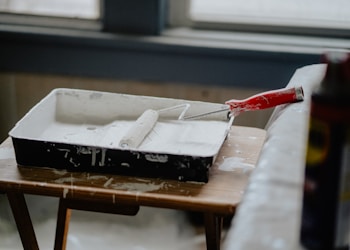You come home from a long day at work, and as you walk in the door, you notice water soaking into the flooring, your furniture floating, and your appliances drowning. Did the aloha spirit leave instantly?
We live in a society with indoor plumbing (thank you!) and natural catastrophes and disasters (no, thank you!); it’s conceivable that you will be dealing with a house flood at some point, whether it’s due to a burst pipe, a sewer backup, a faulty appliance, torrential rain, or a monsoon storm.
If this is your first household flood, don’t worry – we’re here to help! In this blog post, we’ll outline some steps you can take to mitigate the damage caused by a flood and get your home back to normal ASAP. Stay dry, friends!
Keep Your Cool:
While experiencing a flood in your house, it’s easy to become sentimental and stressed. The mess, clean-up, mold concerns, property and valuables damage, and disruption in your life all impact your mental and emotional health. If you believe the problem is too much for you to handle, call a professional if the damage is too severe. Insurance companies and an expert Water Damage Advisor can provide you with the assistance and confidence you require.
Put Safety First Always:
Even a tiny amount of water may be deadly. Check your fuse box to see if it’s a problem, then turn off the main breaker and all the individual fuse switches. You want to steer clear of any risk and damage when the electricity returns.
In the event of a significant flooding, an experienced electrician will need to check, clean, and dry the power box before the electricity is restored.
Before cleaning up the mess, always remember to unplug any electronic devices. Be especially careful when dealing with wet carpets; they can quickly become a slip and fall hazard.
Wear Rubber Boots:
Wearing rubber boots is a must when cleaning up after a flood. Not only will they keep your feet dry, but they’ll also protect you from any harmful chemicals or potential toxins present in the water. They will also save you from electrocution.
If possible, try to avoid contact with water as much as possible. If you do come in contact with water, make sure not to use your hands.
If a burst pipe causes the flood, then there may be some chemicals in it that could harm you if they come in contact with your skin or are ingested. If this occurs and you consume any water, call for help immediately!
Find the Source:
If at all possible, the first thing to do in the event of a house flood is to prevent additional water from coming in. If your home flooding was caused by a burst pipe or a broken appliance, immediately shut off the water supply.
If the flooding is due to storms or natural disasters, you should call your city to ensure that storm drains are open and clear so that the water may flow away more quickly. The less water that comes into your property, the less you will have to remove later.
Ensure Structural Safety:
If there was severe flooding, there’s a good chance that the structural integrity of your home has been compromised. Look for buckled walls and floors as indicators of structural damage, and avoid entering when there is a danger of collapse. Watch out for wobbly or fractured foundations as well.
Until you’ve had a professional assess the damage, it is not safe to enter the premises.
Remove Excess Water:
Once it is safe to do so, begin removing as much water as possible from your home. You can use buckets, mops, or anything else at hand to get the water out of your house and into containers outside. It will help minimize further damage and hasten drying time.
Dry Wet Areas:
Water left untreated for long periods can lead to mold growth and other serious health concerns. So once you have removed excess water, start drying any wet areas as soon as possible using fans, dehumidifiers, and other means of drying.
What Not to Do:
- Do not panic – it is essential to think straight.
- Do not use an electrical appliance until everything is dried.
- Do not try to fix the plumbing yourself – call a professional.
Conclusion:
A flood in your home is, without a doubt, an unpleasant situation. Floods can range in intensity from a minor nuisance to a life-threatening catastrophe. It’s difficult, daunting, and suffocating! But you aren’t by yourself. Professionals with years of expertise and hours of training know exactly what to do to get things back the way they were, clean and dry.
















